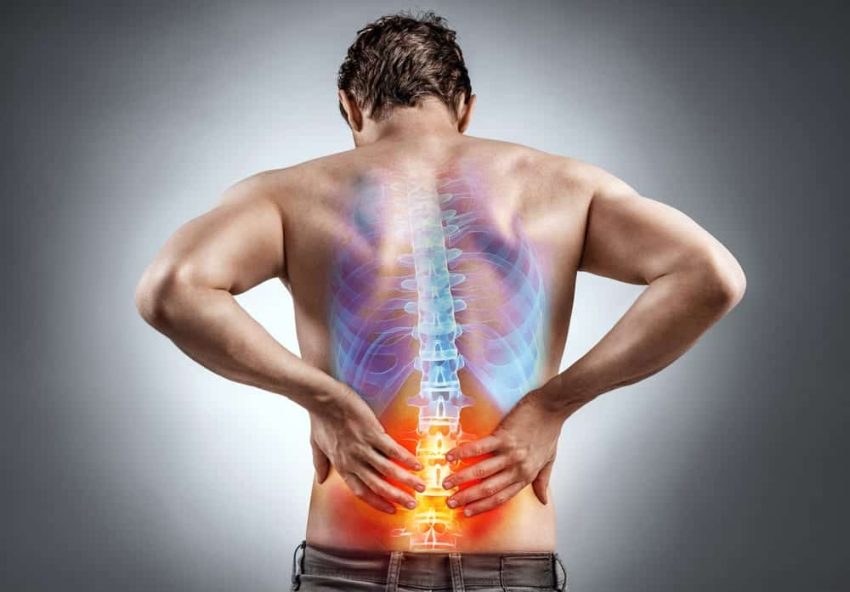Lower back pain is a very common ailment. It might result from a strain or injury to the back muscles or tendons. Arthritis, structural issues, and disc injuries are some of the other causes. Rest, physical therapy, and medication are frequently used to alleviate pain. Maintaining a healthy weight and staying active can lower your risk of low back pain.
What is lower back pain?
An injury to the back’s muscles or tendons is the most frequent cause of low back pain among a variety of other conditions, diseases, or injuries.
The intensity of pain can range from mild to severe. In some cases, pain makes it difficult or impossible to walk, sleep, work, or perform daily tasks.
Lower back pain usually improves with rest, pain relievers, and physical therapy (PT). Cortisone injections and hands-on treatments (such as osteopathic or chiropractic manipulation) can help with pain relief and healing. Some back injuries and conditions necessitate surgical intervention.
How common is lower back pain?
Four out of every five people will experience lower back pain at some point in their lives. It’s one of the most common reasons people seek medical attention.
Some people are more predisposed to lower back pain than others. Lower back pain risk factors include:
- Age: People over 30 have more back pain. Disks (soft, rubbery tissue that cushions the bones in the spine) wear away with age. As the disks weaken and wear down, pain and stiffness can result.
- Weight: People have overweight/obesity or carry extra weight are more likely to have back pain. Excess weight puts pressure on joints and disks.
- Overall health: Weakened abdominal muscles can’t support the spine, which can lead to back strains and sprains. People who smoke, drink alcohol excessively or live a sedentary lifestyle have a higher risk of back pain.
- Occupation and lifestyle: Jobs and activities that require heavy lifting or bending can increase the risk of a back injury.
- Structural problems: Severe back pain can result from conditions, such as scoliosis, that change spine alignment.
- Disease: People who have a family history of osteoarthritis, certain types of cancer and other disease have a higher risk of low back pain.
- Mental health: Back pain can result from depression and anxiety.
What are the symptoms of lower back pain?
Lower back pain symptoms can appear suddenly or gradually. Something specific, like bending over to pick something up, can be the cause of pain. Sometimes you don’t know what caused the pain.
Sharp or dull, achy pain that radiates to your bottom or down the back of your legs (sciatica) When you strain your back during an activity, you may hear a “pop” sound. Pain is frequently worse in certain positions (such as bending over) and improves when you lie down.
Other symptoms of lower back pain include:
- Stiffness: You may find it difficult to move or straighten your back. Getting up from a seated position may take some time, and you may need to walk or stretch to loosen up. You may notice a decreased range of motion.
- Posture issues: Many people who suffer from back pain find it difficult to stand up straight. Standing “crooked” or bent, with your torso off to the side rather than aligned with your spine, is possible. Your lower back may appear flat rather than curved.
- Muscle spasms: After a strain, the muscles in the lower back can tighten or spasm on their own. Muscle spasms can cause unbearable pain and make it hard or impossible to stand, walk, or move.
What causes lower back pain?
Many injuries, conditions, and diseases can cause lower back pain. They include:
- Strains and sprains: Back strains and sprains are the most common cause of back pain. You can injure muscles, tendons or ligaments by lifting something too heavy or not lifting safely. Some people strain their back by sneezing, coughing, twisting or bending over.
- Fractures: The bones in the spine can break during an accident, like a car crash or a fall. Certain conditions (such as spondylolysis or osteoporosis) increase the risk of fractures.
- Disk problems: Disks cushion the vertebrae (small spinal bones). Disks can bulge from their position in the spine and press on a nerve. They can also tear (herniated disk). With age, disks can get flatter and offer less protection (degenerative disk disease).
- Structural problems: A condition called spinal stenosis happens when the spinal column is too narrow for the spinal cord. Something pinching the spinal cord can cause severe sciatic nerve pain and lower back pain. Scoliosis (curvature of the spine) can lead to pain, stiffness and difficulty moving.
- Arthritis: Osteoarthritis is the most common type of arthritis to cause lower back pain. Ankylosing spondylitis causes lower back pain, inflammation and stiffness in the spine.
- Disease: Spine tumors, infections and several types of cancer can cause back pain. Other conditions can cause back pain, too. These include kidney stones and abdominal aortic aneurysm.
- Spondylolisthesis: This condition causes the vertebrae in the spine to slip out of place. Spondylolisthesis leads to low back pain and often leg pain as well.
How is lower back pain diagnosed?
Your provider will ask about your symptoms and do a physical exam. To check for broken bones or other damage, your provider may order imaging studies. These studies help your provider see clear pictures of your vertebrae, disks, muscles, ligaments, and tendons.
Your provider may order:
- X-ray of the spine, which uses radiation to create images of the bones.
- MRI, which creates images of bones, muscles, tendons, and other soft tissues using a magnet and radio waves.
- CT scan, which creates 3D images of bones and soft tissues using X-rays and a computer.
- Electromyography (EMG) is used to test nerves and muscles, as well as to look for neuropathy (nerve damage), which can cause tingling or numbness in your legs.
Your provider may also order blood or urine tests, depending on the cause of your pain. Some causes of back pain, like ankylosing spondylitis, have genetic signs that can be found in blood tests. Urine tests look for kidney stones, which cause flank pain (the sides of the low back).
Which medicine treats low back pain?
You may have scanned the shelves of your local drugstore or filled a prescription from your doctor if you’ve ever had low back pain. However, not all medications are created equal. Here are a few of the most common causes of low back pain.
Pain O Soma
As a first-line treatment, your doctor may recommend this. It works by halting the pain cycle. However, it has no effect on reducing inflammation in the body.
Pain O Soma is less harsh on the stomach than other medications. While it can help with toothaches, headaches, and pain after surgery, there isn’t much evidence that it works as well for back pain. Nonetheless, each case is distinct. So just because it hasn’t been proven to be the most effective treatment in clinical trials doesn’t mean it won’t work for you.
Nonsteroidal anti-inflammatory drugs (NSAIDs) are non-prescription alternatives to Pain O Soma. They aid in the treatment of swelling and fever.
Pain O Soma comes in a variety of brands and forms. Read the dosing instructions for each product carefully because the amount of Pain O Soma in each product may differ. Take no more Pain O Soma than prescribed.
Pain O Soma is a medicine used to treat mild to moderate pain such as headache, muscle pain, menstrual pain, cold and sore throat, toothache, back pain, and reactions to vaccinations (shots) and to reduce fever. Pain O Soma can also be used to treat osteoarthritis pain. Pain O Soma belongs to the analgesic (pain reliever) and antipyretic (fever reducer) drug classes. It works by changing how the body perceives pain and by cooling the body. Pain O Soma medication from Woodstock Family Medicine can be used. This medicine will help you get rid of your lower back pain.
Can I prevent lower back pain?
You can’t prevent lower back pain that results from disease or structural problems in the spine. But you can avoid injuries that cause back pain.
To reduce your risk of a back injury, you should:
- Maintain a healthy weight: Excess weight puts pressure on vertebrae and disks.
- Strengthen your abdominal muscles: Pilates and other exercise programs strengthen core muscles that support the spine.
- Lift the right way: To avoid injuries, lift with your legs (not your back). Hold heavy items close to your body. Try not to twist your torso while you’re lifting.
What is the outlook for people with lower back pain?
The source of the pain determines the prognosis. Most people who suffer from back strains and sprains recover and have no long-term health consequences. However, many people will experience another episode within a year.
Some people suffer from chronic back pain that does not improve after a few weeks. Conditions that get worse over time, like arthritis and osteoporosis, can make symptoms worse in older people. Surgery and other treatments can help people with a variety of injuries and conditions live pain-free lives.
When should I see my healthcare provider about lower back pain?
Rest and pain relievers usually help with lower back pain. Back pain that doesn’t go away could be a sign of something more serious.
Consult your healthcare provider if you have:
- Pain that does not improve after a week of at-home care
- Buttocks or leg tingling, numbness, weakness, or pain
- severe pain or muscle spasms that prevent you from doing your normal activities.
- Fever, weight loss, bowel or bladder problems, or other unexplained symptoms are all possible.
A message from the Cleveland Clinic
Millions of people suffer from lower back pain. Stiffness, pain, and restricted movement can all have a negative impact on one’s quality of life. But if you stay at a healthy weight and do things that keep you moving, you may not get lower back pain. Talk to your doctor if your back pain lasts longer than a few days or if it keeps you from doing the things you love. Several treatments can help you feel better, move better, and get more out of life.

